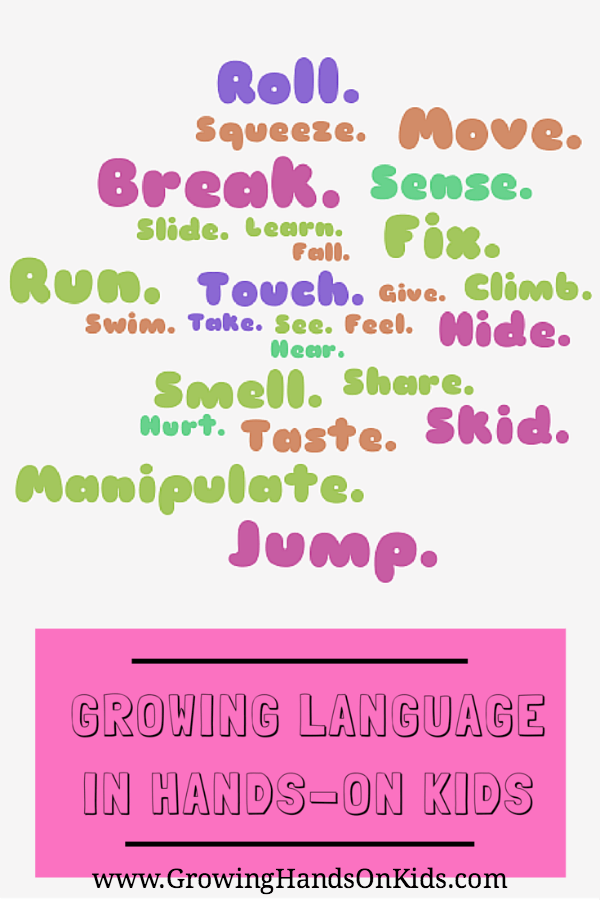Growing Language in Hands-On Kids
Affiliate and Referral links are used below to promote products I love and recommend. I receive a commission on any purchases made through these links. Please see my disclosure policy for more details. As an Amazon Associate, I earn from qualifying purchases.
I am thrilled to have Alex from of The SpeeL sharing with you all again today. She has a great post on encouraging and growing language skills in your hands-on kids.
Touch. Fall. See. Learn. Hear. Break. Smell. Feel. Fix. Take. Share. Give. Taste. Squeeze. Sense. Manipulate. Roll. Run. Hide. Jump. Move. Skid. Slide. Climb. Swim. Hurt.
These words are just a snapshot of the many experiences that children encounter on a daily basis. They epitomize how growing language in hands on kids is essential, and here’s why…
Children learn by doing. This is a fact. But, let me tell you what is happening in their brain. Children are little sponges, they absorb as much as they can from their environment to develop what we call “mental schema.” A mental schema is all the stored information in the brain of a particular concept or experience. The more information, the better.
Children don’t store words as written words in their mind if they haven’t learnt to read yet, of course, but they store what they see, feel, taste, touch, smell, hear and even how the feel about it. So for example, when young children first experience a dog, they might store the soft sensations, the colours, fear or excitement, the unique smell, and the words and sounds that their parents add to the experiences.
This highlights the importance of why we must encourage kids to be hands-on, and in doing so, for parents to add language to their experience so that all this stored information may be understood and even spoken as children learn to talk.
Keeping this in mind, as parents, you can add a wide variety of language. Avoid the “labeling” trap of just naming the item, and instead add language to the hands-on sensations.
Here is just some of the language that you can add:
Sights: big, small, high, shiny, sparkly, tall, top, bottom,
Actions: jump, run, climb, break, fix, skip, move
Sensations: rough, smooth, soft, furry, bumpy, hard,
Feelings: sad, happy, angry, frustrated, excited, surprised
Sounds: loud, quiet, pop, bang, crash, splash
Smells: stinky, sweet, flowery, fruity
Tastes: yummy, yucky, sweet, sour, bitter, salty
What language will you start adding to your hands-on kids’ vocabulary?
Alex Trichilo is an Australian Speech Pathologist with a passion for giving all children the communication skills to be able to successfully live their life. She blogs to spread her messages to a wider audience and to empower parents to give their children the foundational skills of speech and language. She also loves eating amazing food, travelling with her husband, and spending time with her family. You can find her on her blog: The SpeeL, and also on Facebook, Twitter, and Instagram.
Sharing with: Living Montessori Now, Hip Homeschool Moms, Teaching Mama, Christian Montessori Network

Heather Greutman, COTA
Heather Greutman is a Certified Occupational Therapy Assistant with experience in school-based OT services for preschool through high school. She uses her background to share child development tips, tools, and strategies for parents, educators, and therapists. She is the author of many ebooks including The Basics of Fine Motor Skills, and Basics of Pre-Writing Skills, and co-author of Sensory Processing Explained: A Handbook for Parents and Educators.


